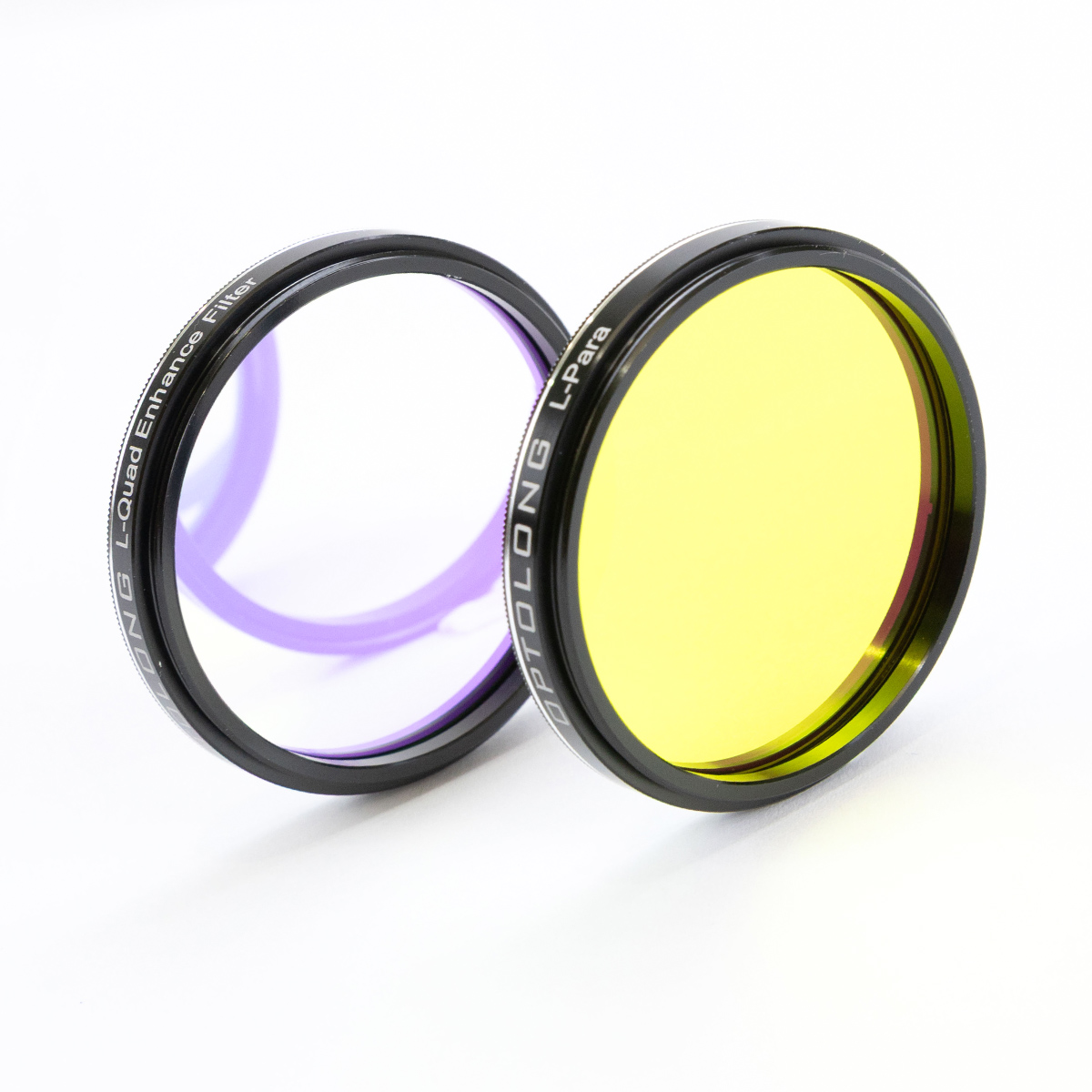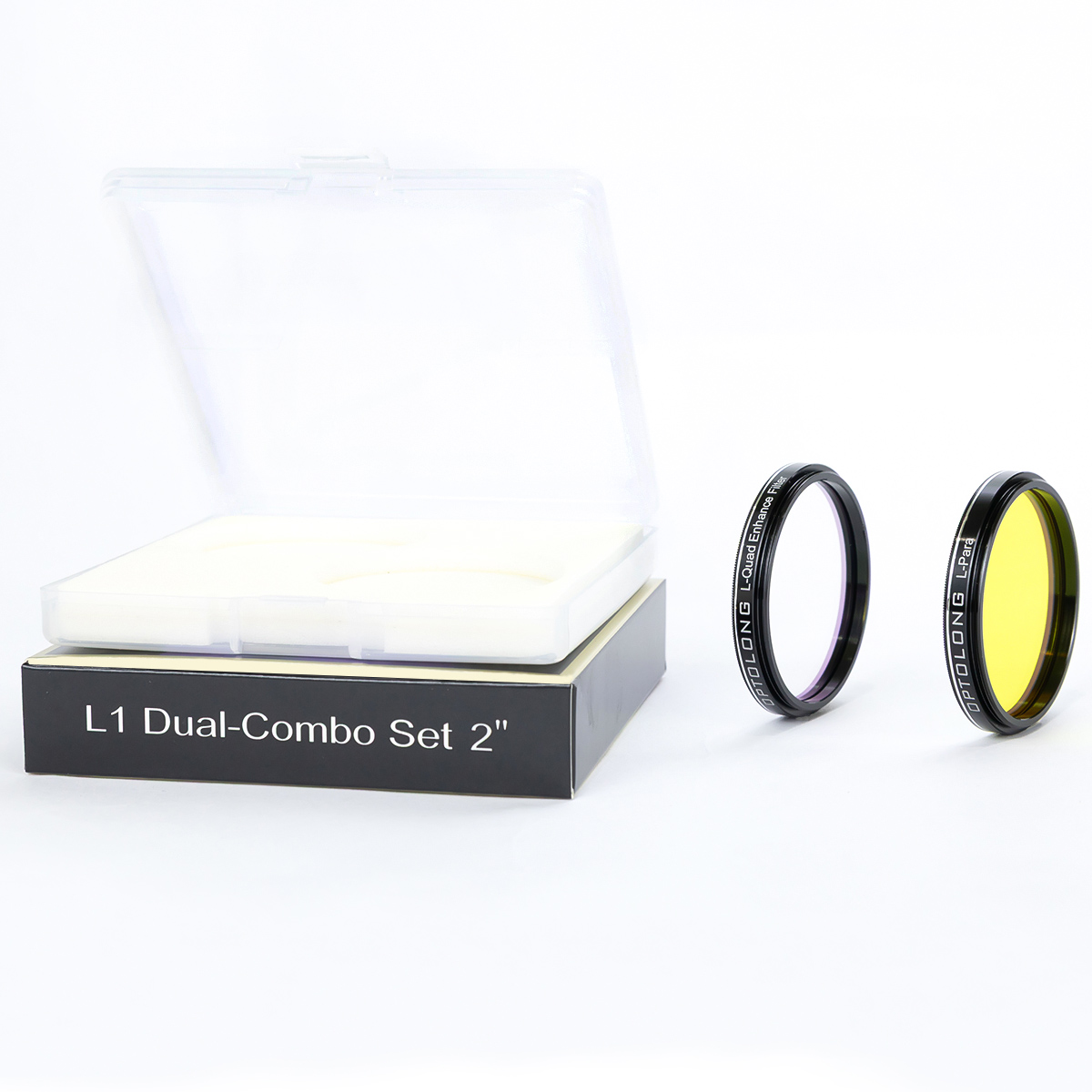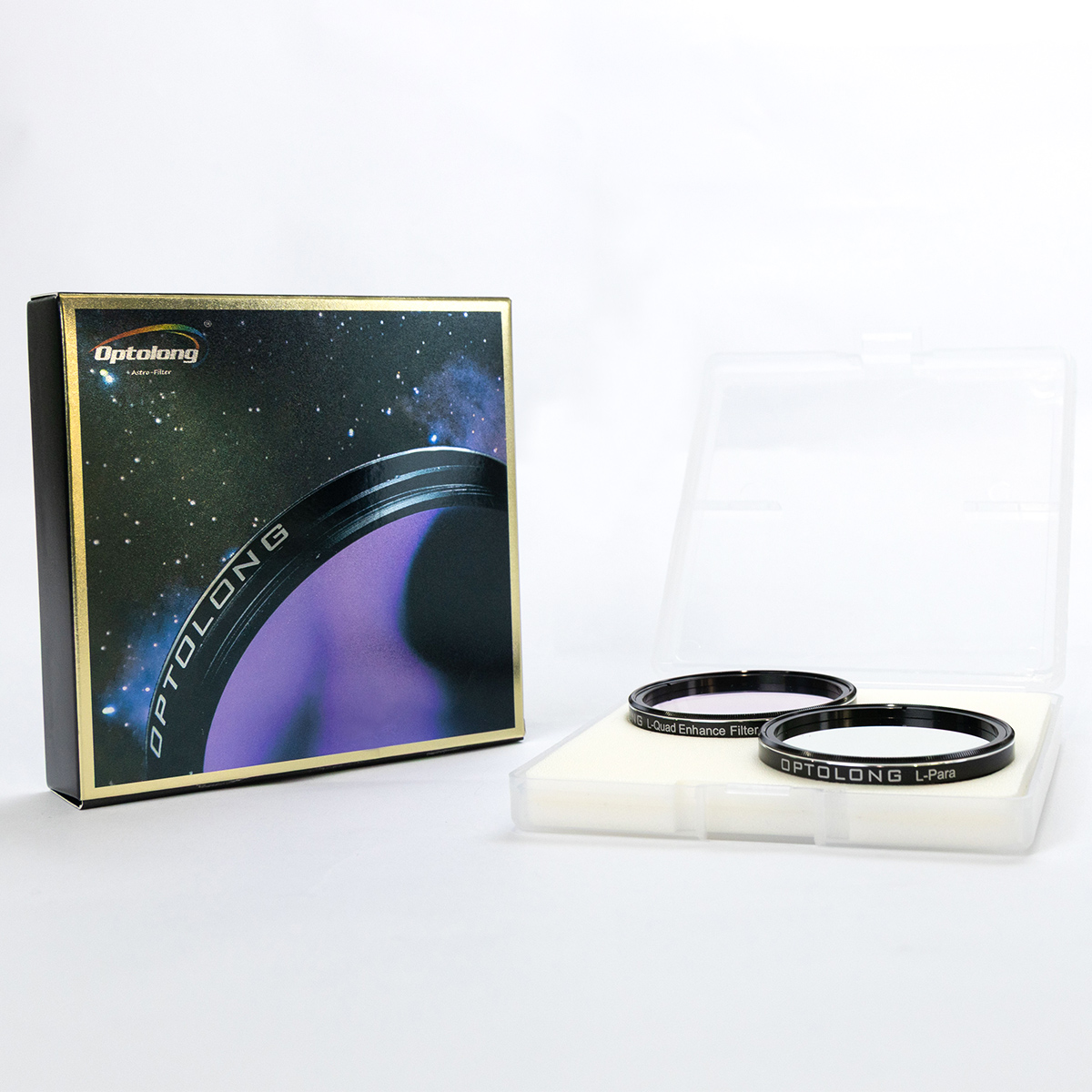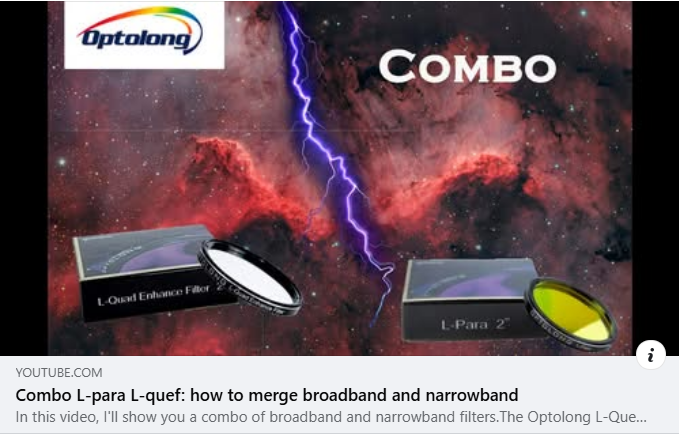-
Description
-
Specification
1. Introduction
L1 Dual -Combo Set includes:1* L-Quad Enhance Filter & 1* L-Para
L-Quad Enhance Filter:Quad bandpass broadband filter , This filter provides better color balance while improving resistance of light pollution. It is suitable for a wide range of imaging targets, including continuous spectrum objects (RGB) such as nebulae, galaxies, and star clusters. This filter maximizes the preservation of RGB color balance in broadband spectrum targets like nebulae and galaxies, effectively improving contrast and detail to render subjects more vivid and three-dimensional.
L-Para:A dual narrowband 10nm filter ,in systems with a focal ratio of F2 and above, the transmittance of nebula emission lines OIII and Ha exceed 85%, with excellent contrast and Anti-Halo characteristics . This filter suitable for all telescope systems, adaptable to fast optics (focal ratios of F2, F2.8, F3.2, F4) as well as various standard/normal focal ratio telescopes. Ideal for capturing Hα & OIII signals in celestial objects, this filter enhances image contrast and reveals richer details in Hα & OIII emissions.
1+1>2 features
“Broadband + Narrowband” synergy engineered for precision and colour fidelity,achieves precise signal capture and color optimization for astrophotography
►L-Quad Enhance Filter: Quad bandpass broadband filter captures the RGB signals of celestial targets
►L-Para : Dual narrowband 10nm filter selectively acquires Hα and OIII emission lines, revealing fine filamentary structures and the detailed morphology of ionised gas in deep-sky objects. After post-processing,photographers can effortlessly obtain fused images combining RGB with Hα & OIII data. This "Broadband-Narrowband Synergy" solution delivers more vibrant color rendition while accentuating subtle signal details, unlocking innovative approaches for astrophotography and enhancing the creative possibilities of color camera imaging. It pioneers new artistic dimensions, transforming the deep-sky photography process into a more technically engaging and visually rewarding experience.
2. Coating Technology
·Multi-layers anti-reflection coating
·Non-cementing optical substrate coating
·Optolong filter adopts precision coating based on Ion-assisted deposition coating technology for durability and resistance to scratching, as well as stability on CWL(central wavelength) no deviation affected by temperature change.
·Planetary rotation system offers precision and homogeneity of coatings ensuring high value on transmission of pass-band and Optical density of off-band.
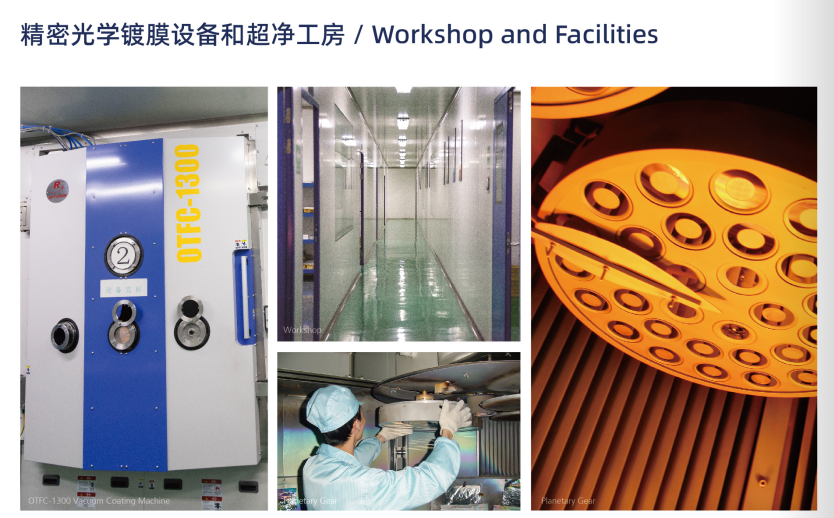
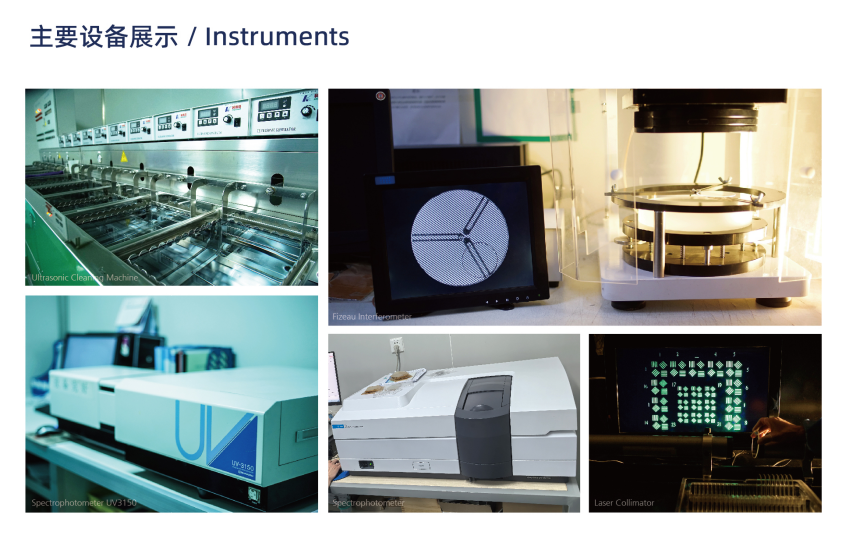
3. L1 Dual -Combo Set Gloable Price
| Specification | Unit Price in USD dollars |
| 2" mounted | $399 |
4. Packing: two filters in one box and package
Outer Box: silve box
Plastic Box: PP material
Lining: imported high pressure white EVA material
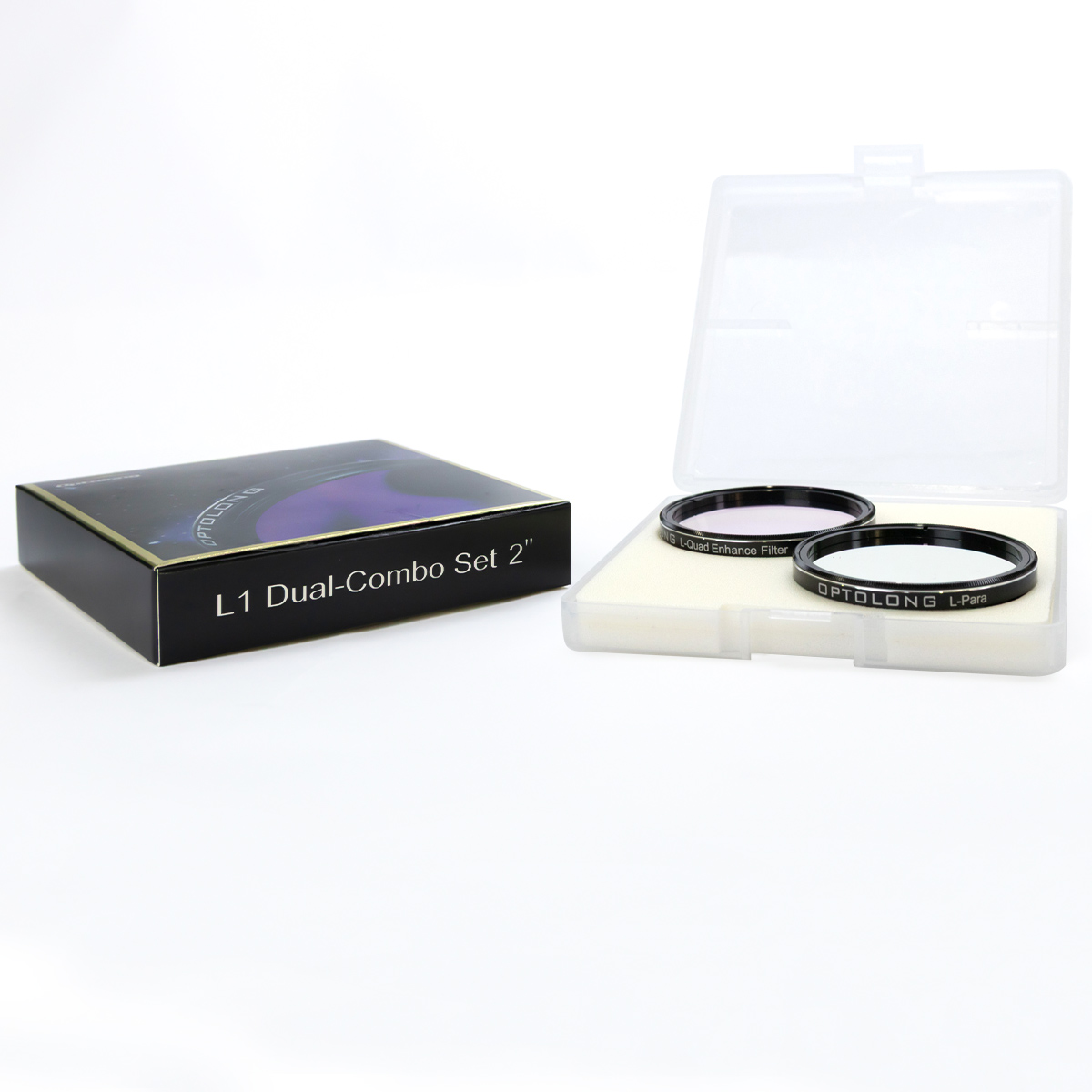
5. Optolong L1 Dual-Combo Set Performance
I. The Lagoon Nebula M8 @Gianni Lacroce
The Lagoon Nebula M8 is a diffuse nebula in the constellation Sagittarius. It is one of the brightest regions in the sky and is visible to the naked eye on clear, dark nights.
One of the main features of the Lagoon Nebula is the presence of small black spots known as Bok globules, which are protostellar clouds.
The brightest region of the nebula, at the centre of the Lagoon, is known as the Hourglass Nebula and is a region of intense star formation.
The Trifid Nebula M20 on the right is a well-known star-forming region and is made up of three different types of cosmic clouds: reddish emission nebulae, blue reflection nebulae (produced by dust reflecting starlight), and dark nebulae, including the central one divided into three dense bands of dust, hence the name Trifid.
NGC 6559 on the left features both red emission and bluish reflection regions.
This image is the result of two shots, one broadband and one narrowband, for a total of almost 30 hours, a combination of two l-quef and l-para filters to amplify the signal and detail of the nebulae.
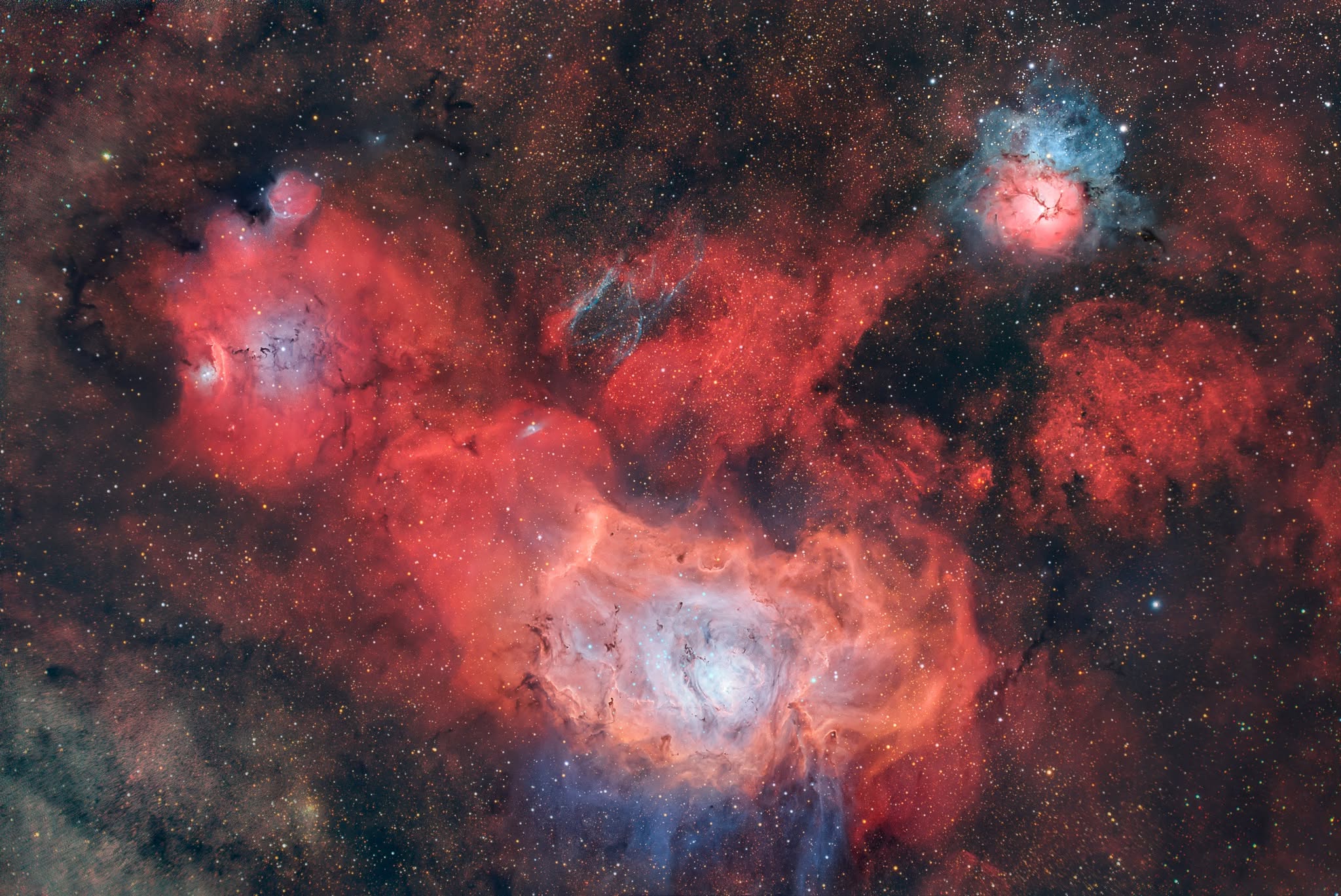
Imaging Telescope: Askar fra600 reduced to f3.9
Imaging Camera: Zwo Asi 2600 mc duo
Mount: Zwo Am5
Optolong L-Para and L-QEF filters
►Here are the unfiltered frame, the L-QEF filtered frame, and the L-Para filtered frame.
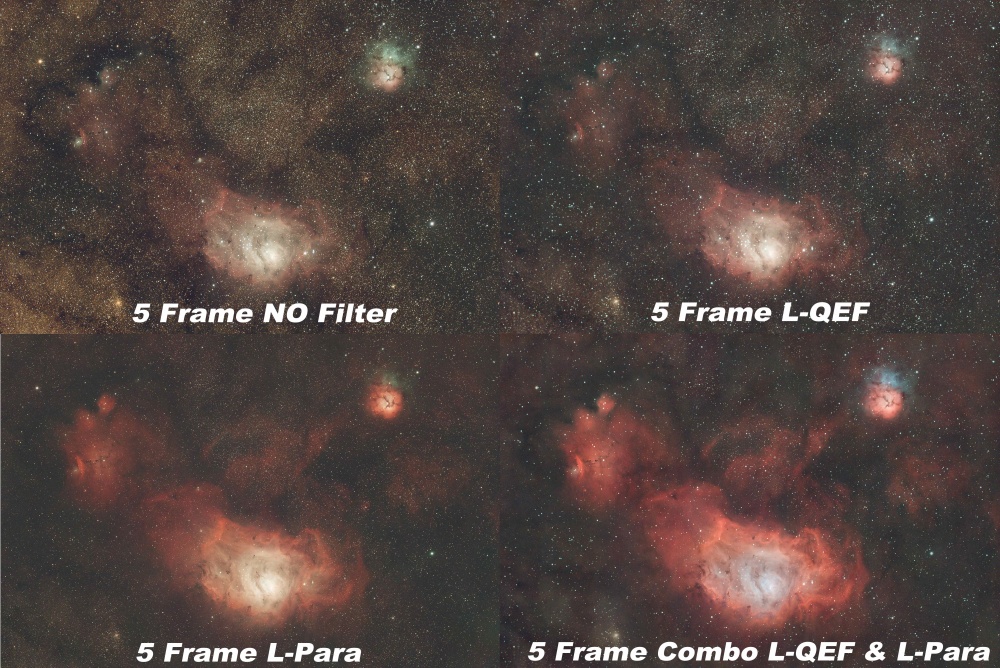
II. IC434 Horsehead Nebula B33 Flame Nebula Ngc2024 @Gianni Lacroce
IC 434 (Horsehead Nebula) is one of the most popular winter celestial targets.
This nebula complex consists of B33, the Flame Nebula (NGC 2024), and its massive hydrogen wave structure, located in the Orion constellation near the bright star Alnitak in Orion's , approximately 1,500 light-years from Earth.
This astrophoto was captured using a strategic two-filter approach: The L-QEF broadband filter collected detailed RGB continuum signals from the Horsehead Nebula (a continuous spectrum target rich in Hα emissions) The L-Para dual-narrowband filter specifically enhanced the (Hα) structure Through precise blending, these specialized filters worked synergistically to produce this visually striking rendition of the Horsehead Nebula~
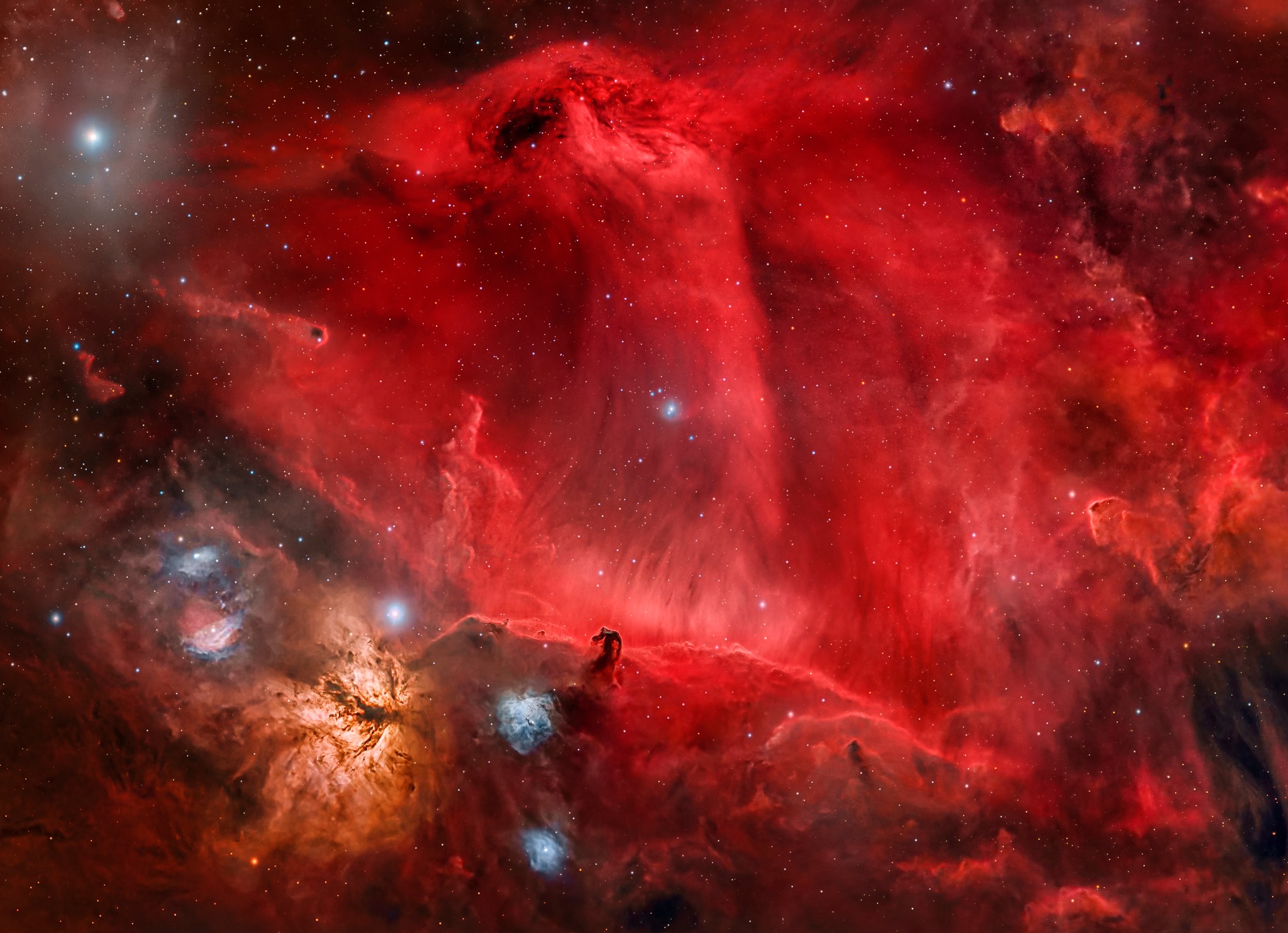
Imaging telescopeAskar fra600 reduced to f3.9
Imaging Camer: Zwo Asi 2600 mc duo
Mount: Zwo Am5
Filters: Optolong filter L-QEF, L-Para
III. NGC 2237_ROSETTA HOO @ Mirko Tondinelli & Astronomia Astris
NGC 2237_ROSETTA HOO After processing the Rosetta in Hubble Palette
I have created a two-colour version with the data collected by my telescope combined with those of my astrophotographer friend Riccardo Pacini astrophotography . The Rosetta Nebula (also known by its catalogue numbers NGC 2237 and C 49) is a large, roughly circular H II region located at the edge of a giant molecular cloud in the constellation Unicorn.
The nebula has an angular diameter of 1.3° and lies at a distance of 1600 parsecs (about 5200 light years) from the Solar System; it is about 100 light years in size. At the centre of the Rosetta Nebula is a bright open cluster known as NGC 2244.

Tecnosky 90/540 FPL55 OWL Omegon veTEC 571 C Sky-Watcher EQ6 Pro
FILTERS: Optolong L-Para 10nm 2", Optolong L-QEF 2" ( for stars)
DATES: 13 February 2024, 27 February 2025
LIGHT: Optolong L-Para 10nm 2": 30×300,″(2h 30′) Optolong L-QEF 2": 30×180,″(1h 30′) for stars
Integration: 4 hours Explore scientific Fdc100 Asi 294 mm Starizona flattener Integration with Ha and O3 filters for a total of about 15 hours.
West Virginia( USA)@Mirko Tondinelli & Astronomia Astris
Credit: Mirko Tondinelli & Astronomia Astris
►Testimonial by video on YouTube.
Have you ever combined channels from different filters? In this video, Gianni will show you how to do it in detail using Pixinsight and Photoshop.
2"(M48×0.75)

